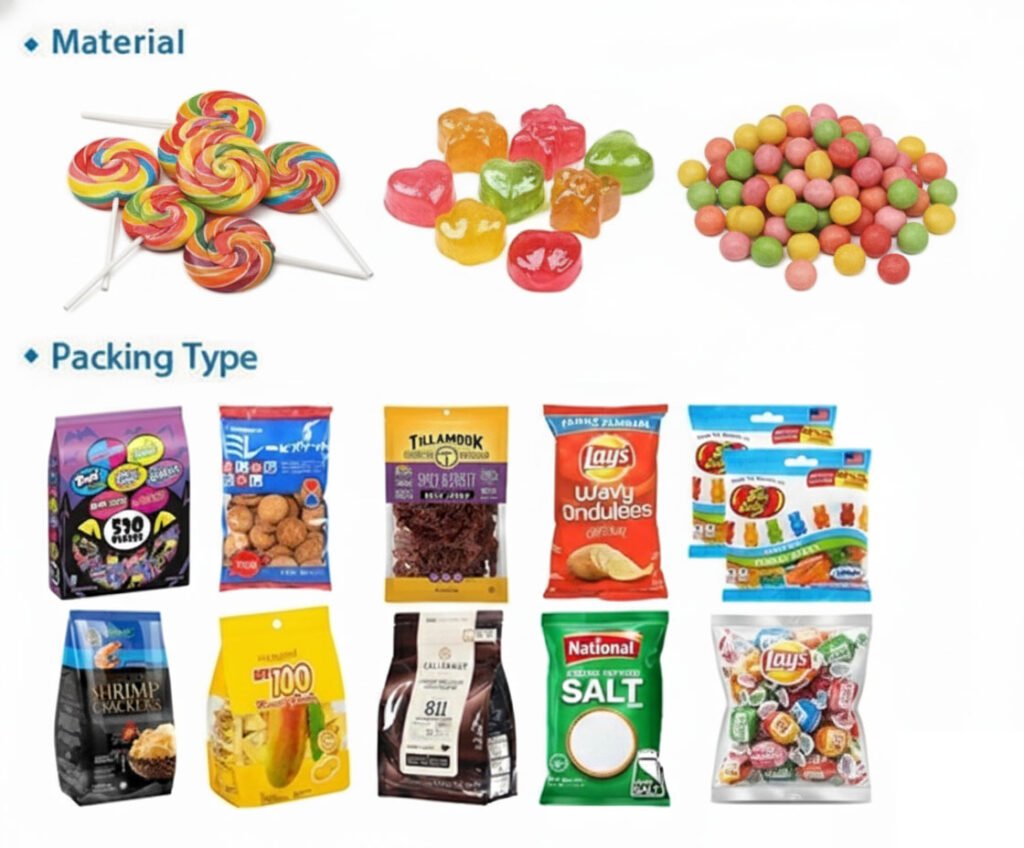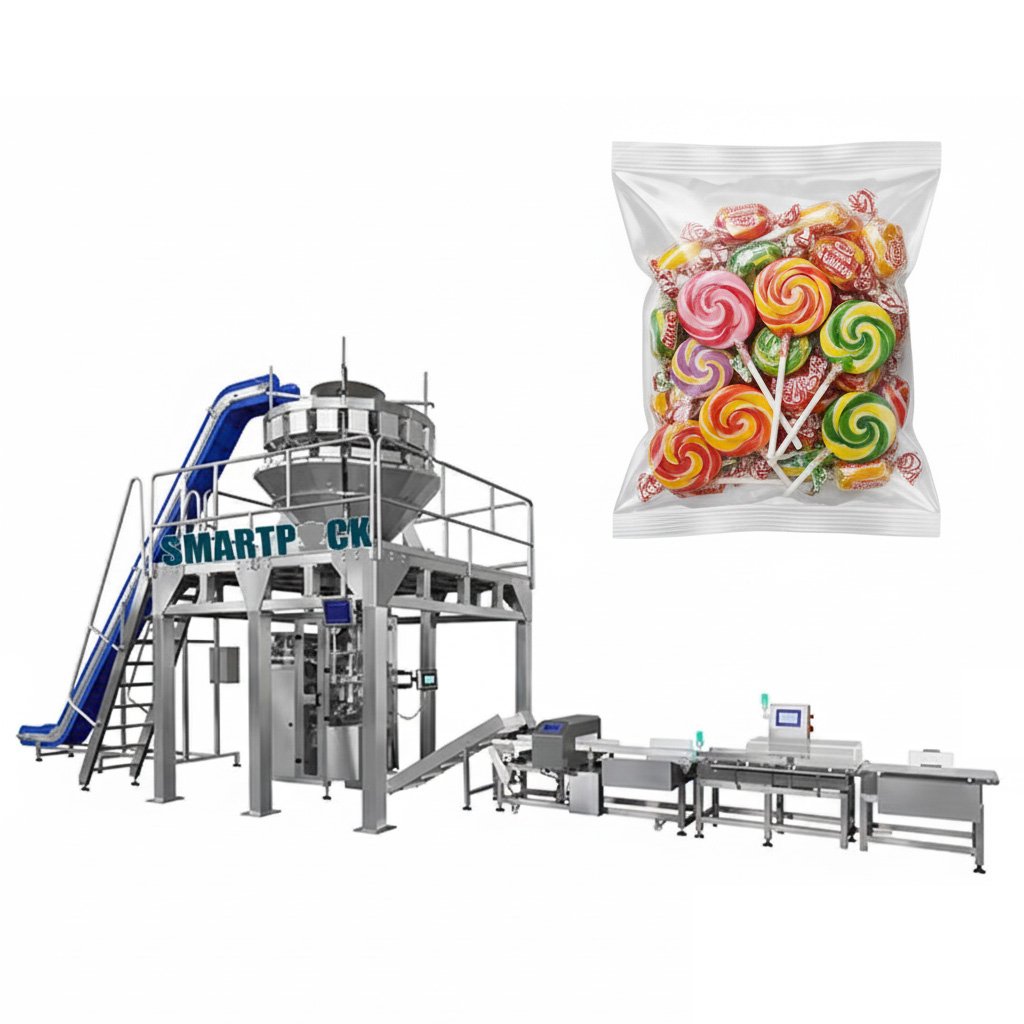Q1: How do you prevent lollipop sticks from getting stuck on the conveyor belt feeding the machine? A1: This is a common issue with standard flat belts. We solve this by using an incline conveyor with cleats or scoops. Instead of just sliding up a belt, the lollipops are carried in individual pockets. This keeps them separated and prevents the sticks from catching on the belt or tangling with each other. For fully automated lines, we can also integrate a vibratory bowl feeder that orients each lollipop correctly before it is lifted, ensuring a smooth and orderly flow into the weigher.
Q2: How do you perform a changeover for lollipops with different stick lengths?
A2: Our machine is designed for fast changeovers. The process is straightforward. The stick guiding channels inside the machine are adjustable. An operator can easily widen or narrow them using simple hand-wheels or quick-release clamps, with no special tools required. The settings for the bag length and sealing positions are changed on the machine’s touchscreen HMI. A complete changeover for a different stick length can typically be done in under 20 minutes, which minimizes downtime.
Q3: How do you reduce the problem of sticks scraping or tearing the film?
A3: Stick scraping is a risk, so we address it in three ways. First, the directional feeding system ensures the lollipop drops straight down, with the stick aligned vertically, so it’s less likely to hit the side of the film. Second, we use a wider forming tube than standard machines. This creates more space between the lollipop and the film as it falls. Third, the servo-controlled film transport system maintains consistent tension, so the film is not too tight, which makes it less prone to tearing if a stick does make contact.
Q4: How does this machine connect with a metal detector or checkweigher?
A4: Integrating these quality control machines is standard practice. The VFFS machine’s exit conveyor is placed in line with the checkweigher and metal detector. Once a bag is filled and sealed, it drops onto this conveyor and travels directly through the metal detector to check for contaminants. After that, it moves across the checkweigher to confirm its weight is within the acceptable range. If a bag fails either check, a rejection arm automatically pushes it off the line into a reject bin. This creates a fully integrated and automated quality assurance process.


Reviews
There are no reviews yet.